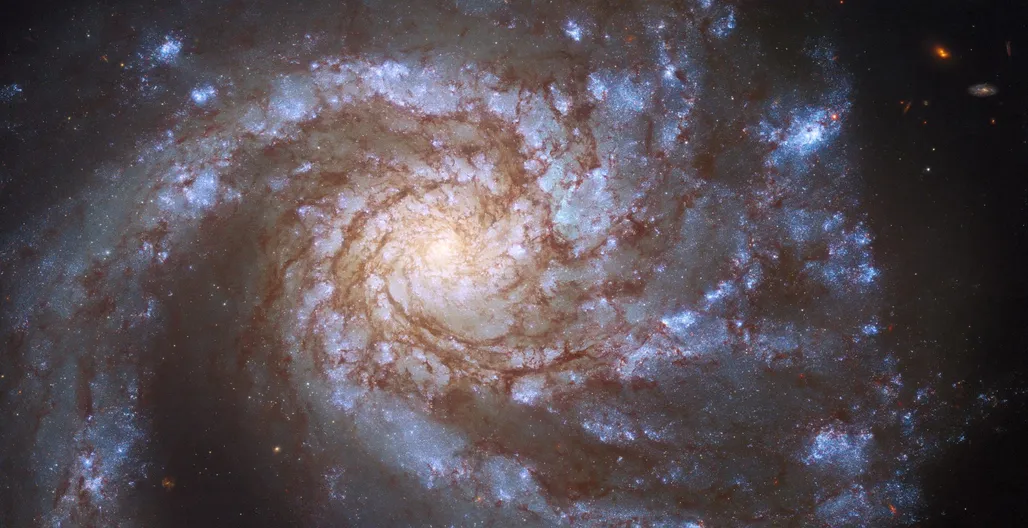
Image du télescope spatial Hubble de la galaxie spirale M99, qui se trouve à environ 42 millions d’années-lumière de la Terre dans la constellation de Coma Berenices. Crédit : ESA/Hubble & ; NASA, M. Kasliwal, J. Lee et l’équipe PHANGS-HST
La magnifique galaxie spirale M99 remplit le cadre de cette image du ;” data-gt-translate-attributes=”[{” attribute=””>NASA/ESA Hubble Space Telescope. M99 — which is located about 42 million light-years from Earth in the constellation Coma Berenices — is a “grand design” spiral galaxy, so-called because of the well-defined, prominent spiral arms visible in this image. M99 was captured by Hubble’s Wide Field Camera 3 on two separate occasions, helping astronomers study two entirely different astronomical phenomena.
A grand design spiral galaxy is a type of spiral galaxy with prominent and well-defined spiral arms, in contract to multi-arm and flocculent spirals which have subtler structural features. A grand design galaxy’s spiral arms stretch clearly across the galaxy through many radians and can be observed over a considerable proportion of the galaxy’s radius.
The first set of observations aimed to explore a gap between two different varieties of cosmic explosions; novae and supernovae. Novae, which are caused by the interactions between white dwarfs and larger stars in binary systems, are far less bright than the supernovae which mark the catastrophically violent deaths of massive stars. However, current astronomical theories predict that sudden, fleeting events could occur that shine with brightnesses between those of novae and supernovae. Despite being described by astronomers as being shrouded in mystery and controversy, just such an event was observed in M99. Astronomers turned to Hubble’s keen vision to take a closer look and precisely locate the fading source.
The second set of observations was part of a large Hubble project which aims to chart the connections between young stars and the clouds of cold gas from which they form. Hubble inspected 38 nearby galaxies, identifying clusters of hot, young stars. These galaxies were also observed by the Atacama Large Millimeter/submillimeter Array (ALMA), a colossal radio telescope consisting of 66 individual dishes perched high in the Chilean Andes. The combination of Hubble’s observations of young stars and ALMA’s insight into clouds of cold gas will allow astronomers to delve into the details of star formation, and paves the way for future science with the NASA/ESA/CSA James Webb Space Telescope.



